Estimated reading time: 7 minutes
Water is one of our biggest stockpiling problems. It’s not that water is hard to come by or expensive, it’s that we need so much of it. It's standard to suggest that we need one gallon of water per person per day in a survival situation, but that's just for drinking. When we include bathing, cooking, cleaning, and watering our gardens, we find that we’ll go through a whole lot more water than that.
Part of the solution is to purify water ourselves so that we can harvest it from nature. Whether that water is coming from rainwater capture or from a local pond, our ability to purify it is essential to ensuring that our families have sufficient biologically pure water to drink.
But what about when that water is short? What about those months when we don’t have enough rainfall to even provide drinking water, let alone anything else? It is clear that we need to store plenty of water to get us through those dry spells.
One thing to keep in mind is that the same containers used to store purified water can also be used to store raw, untreated water. We just need to make sure to label the containers so we know if the water in them is potable (drinkable) or not.
Want to save this post for later? Click Here to Pin It On Pinterest!
Conventional Water Storage Solutions
But the question still remains, where to store all that water? Here are some common possibilities:
Under the Bed
One great option for people who have limited space, like apartment dwellers, is to store water in cleaned out milk jugs under the bed. While this won’t come anywhere close to providing as much space as some of the other methods we’re going to discuss, it’s cheap and fits into the space available in an apartment. Others can use it too; but there are better options for them.
Water Bricks
The Water Brick is basically a commercialized version of those milk jugs, combined with Lego blocks. The designers of the water brick made a sturdy water jug design that is interlocking, allowing them to be stacked up like a wall. This makes much better use of space, especially when storing water in basements. The big problem is that buying enough water bricks to do the job is expensive.
Barrels and Drums
If you’ve got a rainwater capture system, then you’re going to have at least one rain barrel to go with it. But why stop at one? Connecting multiple barrels together really isn’t all that hard and if you use those blue plastic barrels instead of the ones sold for rainwater harvesting, adding barrels is cheap. A few extra barrels greatly increases your water storage capacity.
While you’re buying barrels, consider buying a few extra for the basement. Many of us use our basements as a pantry for our stockpile anyway, so there’s no reason not to put some water barrels down there either.
Garbage Cans & Plastic Bins
If you have trouble coming up with used blue barrels but still want an alternative to rain barrels, consider buying plastic trash cans. Even some of the heavier duty trash cans can be purchased cheaper than rain barrels can, if you shop around.
The same can be said for plastic storage bins. There is one problem with either of these though. That is that they aren’t airtight, so water can evaporate out of them, even with the lids on. You’ll need to check them on a regular basis and top them off.
Agricultural Water Tank
If you want to be able to store a lot of water, then an agricultural water tank is hard to beat. I’ve seen these up to 3,500 gallons and I wouldn’t be surprised if they go even bigger than that. I’ll warn you though, they are rather expensive. They’re also rather hard to hide from the neighbors.
Store it in the Basement
As I said, those water bricks are great for use in the basement, but so are barrels, drums, garbage cans, and plastic bins. For those fortunate to have an unfinished basement, the extra storage space it provides makes it much easier to stockpile supplies and do other prepping projects in general. Adding water storage to that isn’t a problem at all.
One thing to consider if you’re setting up food and water storage in the basement is to put barrels or trash cans on the floor, with shelves built over them. Because of the weight, stacking large water containers is difficult. But there’s still a good four feet or more of vertical space above them. Adding some shelves there makes excellent use of the available storage space.
WaterBOB
The Water BOB is unique in this list, in that it is only intended to be a temporary water storage solution. For those who might not be familiar with it, the Water BOB is a flexible plastic water bladder that’s intended to go into the bathtub. Filled with water, its capacity is whatever the capacity of the tub is, filled all the way to the brim. A small siphon pump allows water to be siphoned off as needed.
The drawback to this system is that it isn’t something you can leave in place, unless you just happen to have a spare bathtub in the house that you don’t use. On the other hand, I made use of my WaterBOB during the February 2021 freeze, when there wasn’t any water flowing in my city’s pipes, getting us through the five days before the water came back on.
Unconventional Water Storage
If we want to stockpile large quantities of water, and we should, I would say that we need to look beyond those common means of stockpiling water, and look at things like:
Water Bed
A water bed is nothing more than a giant bladder, filled with water. Chemicals are added to that water, keeping algae from forming. So, the water basically stays as pure as it was when you put it in. A queen sized water bed will hold 162 to 187 gallons, while a king sized one holds about 235. That’s not a huge amount, but it’s the equivalent of three to five barrels. That’s not bad.
Cistern
The ultimate choice is to build a cistern; either out of cement or by building a structure to stabilize a rubberized water bladder. As with the agricultural water tank, the big issues here are cost and hiding it from the neighbors. But if you’re making an addition to your home, it might be a good idea to hide one under your foundation. The cost would be about like adding a section of basement and the water would be well hidden.
Swimming Pool
If you don't already have an in-ground swimming pool, you could purchase an above-ground swimming pool. These can be bought for as little as a few hundred dollars and will hold as much as several thousand gallons, depending on the size purchased. Not only that, but it’s a stealthy solution as all your neighbors are going to see is a swimming pool for the kids to play in. The chemical process used to keep the water clean also keeps it safe to drink.
Landscaping Pond
Another stealthy way of building a cistern is to put in a landscaping pond. The EPA doesn’t require a permit for building a pond unless it holds over 200 acre-feet of water. There’s no way you’re going to dig one that big in your yard. A 12’ to 15’ pond, a few feet deep, will hold a lot of water and give you a place to raise fish as well, giving your family a good source of animal protein.
One Final Note
Don’t bother buying dehydrated water for your stockpile. I found that it takes just as much water to rehydrate it as the resulting water. I think they need to work on that technology a bit more, perfecting it and increasing the yield.
Like this post? Don't Forget to Pin It On Pinterest!




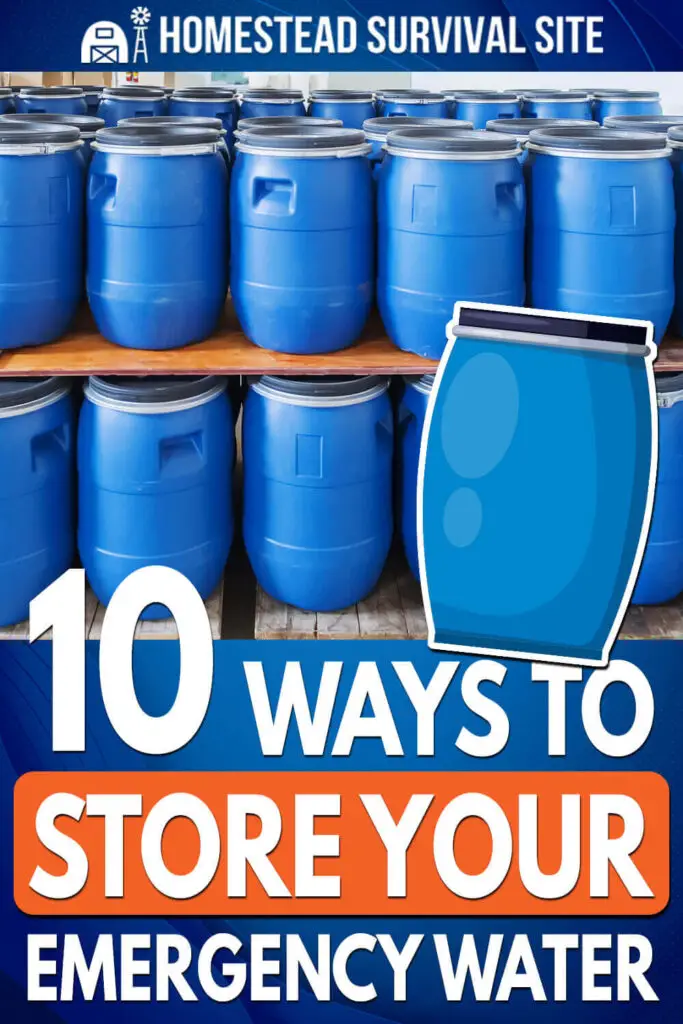
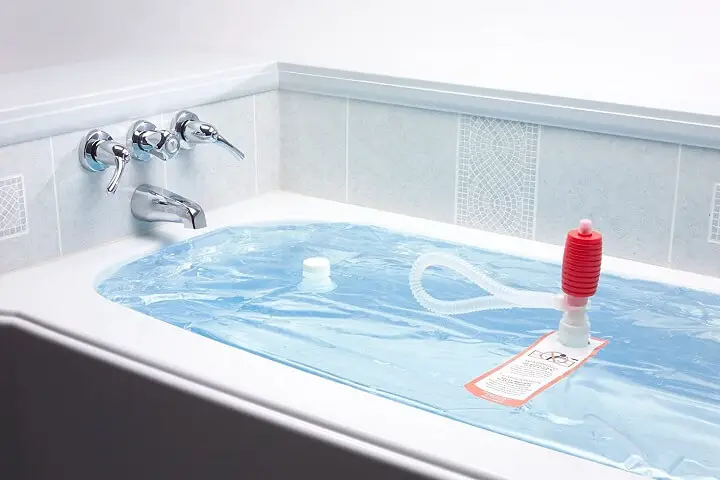

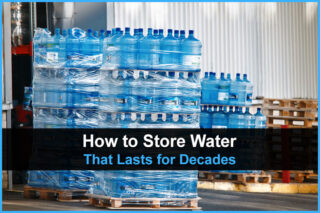


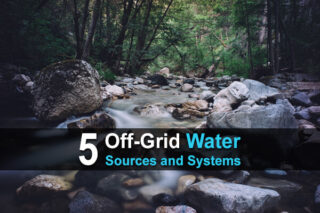

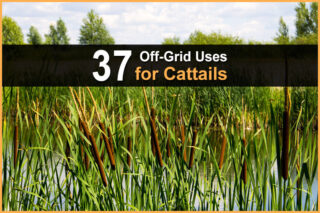


If you live near a soft drink company, they sell 55 gal. barrels very cheap. Try to get them early, as some people buy them up, clean them and sell for profit. I’m using 5 purchased from my local Pepsi company.